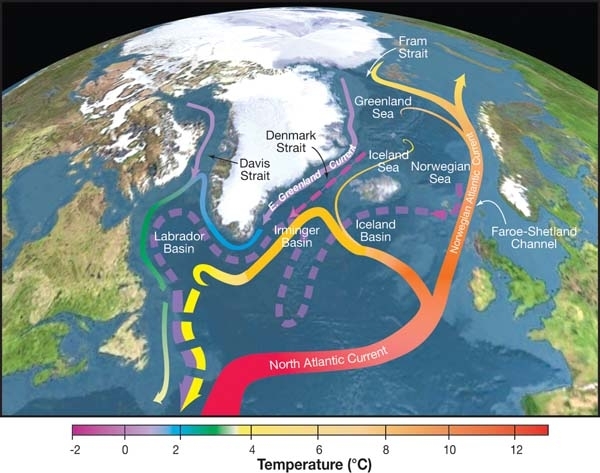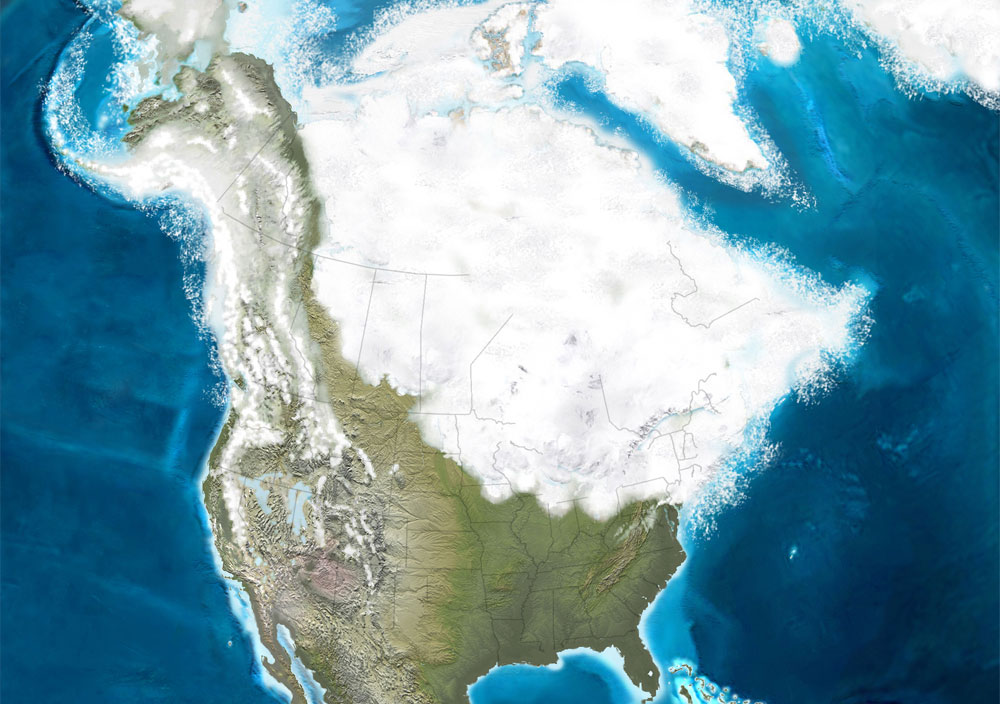Following
the River
New evidence of ancient waterway could provide clues about modern-day climate
Following
the River
New evidence of ancient waterway could provide clues about modern-day climate
New evidence that an ancient river system flowed from Canada’s western mountain ranges to the Labrador Sea is raising questions about the impact it may have had on Earth’s climate millions of years ago and could provide clues to what the future climate might be like, Clemson University researchers said.
Scientists have long hypothesized that the now-extinct Bell River and its tributaries flowed east about 3-30 million years ago, until the Laurentide Ice Sheet wiped it from the landscape during the Ice Age.
Researchers said they have found fresh evidence of the river’s existence by comparing sediment deposits about 1,800 miles apart and analyzing shells left by marine life of the time. Some samples came from the Saglek Basin in the Labrador Sea.
Other samples were taken from sites in Alberta and Saskatchewan.
Researchers detailed their work in a recent edition of GSA Bulletin, a journal published by The Geological Society of America. Clemson co-authors included Alex Pullen (pictured), an assistant professor of environmental engineering and Earth sciences and Julia Corradino, a master’s student in hydrogeology when she participated in the research.
Researchers used uranium-lead dating to compare zircon crystals in the two sets of samples. The results suggested the two sets of sediments were from the same source and that they were carried across the continent by the ancient river system, researchers said.
Researchers also analyzed shells and shell fragments of ancient bivalve marine organisms found in the cores extracted from the underwater wells.
“When they build their shells, they take on the chemistry of that sea water,” Pullen said. “That river, we think, changed the chemistry of the Labrador Sea such that we can take these shells and measure some isotopes and say, ‘This is not what the modern Labrador Sea is like now.’”
For Pullen and Corradino, the new evidence that Bell River did exist has raised questions about how the massive amounts of freshwater flowing into the sea would have affected the circulating currents of ocean water that help drive weather patterns.
It’s a question that could be relevant to the modern world. The Greenland Ice Sheet is melting freshwater into the sea in the same area where the Bell River is believed to have emptied freshwater into the sea.
For Pullen and Corradino, the new evidence that Bell River did exist has raised questions about how the massive amounts of freshwater flowing into the sea would have affected the circulating currents of ocean water that help drive weather patterns.
It’s a question that could be relevant to the modern world. The Greenland Ice Sheet is melting freshwater into the sea in the same area where the Bell River is believed to have emptied freshwater into the sea.

Image Credit: R. Curry, Woods Hole Oceanographic Institution/Science/USGCRP., CC BY 3.0
Scientists working separately from Pullen and Corradino believe the freshwater from the melting ice sheet is slowing Atlantic meridional overturning circulation and that it could have major implications for the global climate.

Image Credit: flickr.com/photos/noaa_glerl/8740576431
Whether clues from the ancient Bell River system can help explain the modern climate remains an open question, but Pullen has some ideas for next steps. Next for geologists is to determine more precisely when the river died, he said. Researchers believe it happened sometime around the start of the last Ice Age, when glaciers formed and grew to cover what is now Canada and northern parts of the United States. Pullen would like to know if the river died and then glaciers started to form in the Northern Hemisphere, or if the opposite happened—glaciers shut down the Bell River, which then amplified the formation of glaciers.